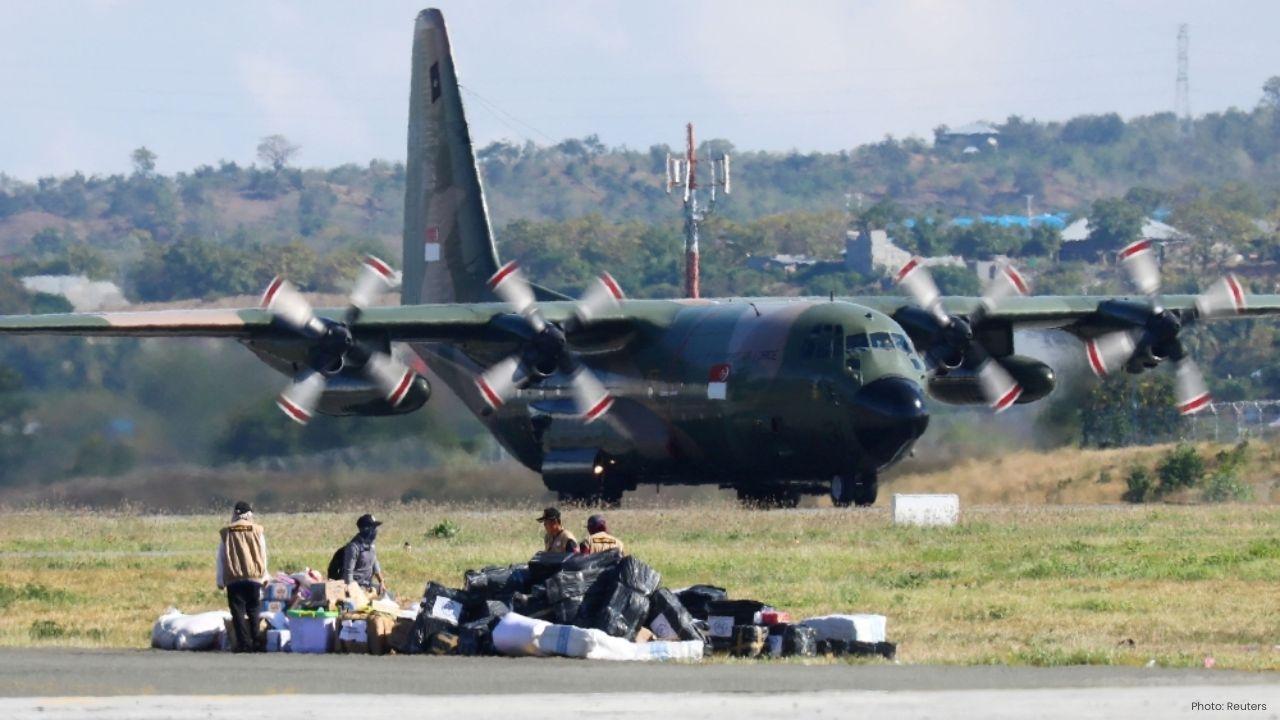
Join 10k+ people to get notified about new posts, news and tips.
Do not worry we don't spam!

Post by : Meena Ariff
In a tense military exercise held in Singapore earlier this year, Southeast Asian officials, military officers, and security experts took part in a war game imagining a crisis in the Taiwan Strait. The scenario was alarming: China’s military had blocked all air and sea access to Taiwan, and about one million foreign nationals — most from Southeast Asia — were trapped on the island.
The two-day simulation, held at a Singapore hotel in April, brought together around 40 participants. They included serving and retired officials from the Asia-Pacific region, former military officers, and scholars who study security issues. Their task was to plan how different countries might react to this crisis.
A Race Against Time
In the simulation, hours passed as the participants — playing the roles of foreign ministers and defense chiefs — struggled to coordinate their moves. Some argued for a joint plan through the Association of Southeast Asian Nations (ASEAN), while others tried to work with the mock representatives of the United States, China, and Japan.
The goal was clear: to open safe air and sea routes to rescue their citizens. But progress was slow. In the end, one conclusion stood out: without Singapore’s involvement, a large-scale evacuation would not be possible.
Singapore Steps In at the Last Minute
According to people familiar with the exercise, Singapore found a way to arrange flights to get its citizens out of Taiwan. Even more importantly, Singapore offered to help evacuate citizens from other Southeast Asian countries.
Singapore was able to do this because of its long-standing but quiet military presence in Taiwan, where it has conducted training for decades. This allowed it to use certain airfields and aircraft in the simulation — a major advantage over other countries.
However, the exercise ended before anyone could explore exactly how Singapore had reached a deal with China to create a safe corridor for evacuations through the blockade.
Why This Simulation Matters
The event took place against the backdrop of rising tension between the United States and China in the Asia-Pacific region. Many analysts believe a real conflict over Taiwan could involve the US and directly affect other countries in the region.
Although the scenario in the exercise was fictional and did not represent official government policy, the players worked based on the known positions of nine countries — including Singapore, China, Taiwan, the US, Indonesia, Vietnam, and the Philippines.
Millions Could Be Affected
Southeast Asians make up almost 94% of all foreign nationals living in Taiwan, according to Taiwan’s National Immigration Agency. The largest groups are from Indonesia, Vietnam, and the Philippines. Smaller numbers come from Japan, the United States, and other nations.
If a real blockade were to happen, these people would be at risk of being trapped on the island, making evacuation plans a priority for their governments.
Singapore’s Unique Position
Singapore’s military connection with Taiwan dates back to 1975 under a program known as Project Starlight. Each year, up to 3,000 Singaporean infantry and commando troops train at three camps in southern Taiwan. The terrain there, with its mountains and jungles, is similar to conditions in Singapore’s region, making it valuable for training.
For Singapore, this presence also offers a strategic advantage. It gives the city-state a chance to closely observe both the Taiwan Strait and the northern part of the South China Sea — two areas of great geopolitical importance.
China’s Opposition
China considers Taiwan part of its territory and has never ruled out using force to take control of the island. It strongly opposes any form of official relationship between other countries and Taiwan, including military cooperation.
Despite this, Singapore has maintained its training program in Taiwan, balancing its relations with both Beijing and Taipei. Analysts say ending this program could disrupt the careful diplomatic balance Singapore has built over decades.
Risk in a Real Conflict
If an actual war broke out in Taiwan, there is a chance Singaporean troops training there could become trapped. Some experts say they could even be used as bargaining chips by China.
For all Southeast Asian countries, evacuating citizens during such a crisis would be extremely difficult. This is why analysts believe it is important for these countries to develop quiet but practical ties with Taiwan — especially with its military — to make any rescue mission possible.
Mixed Readiness Across ASEAN
While Singapore already has these unofficial networks, the Philippines is working to build similar connections. But it is unclear whether other Southeast Asian nations, like Indonesia and Vietnam, have the same level of preparation.
The Philippines has confirmed that it has plans for emergencies involving Taiwan, though it has not shared details. Manila has a special interest in Taiwan because of its geographical closeness and the large Filipino community living there.
Indonesia and Vietnam have not commented publicly about such preparations.
Why Beijing Might Allow Evacuations
Some analysts believe China might want Southeast Asian countries to stay neutral during a Taiwan conflict. In that case, Beijing could agree to allow evacuations as a way to maintain good diplomatic relations in the region.
Allowing people to leave safely could help China avoid negative public opinion among ASEAN nations, even while carrying out military action against Taiwan.
Lessons From the Exercise
The war game’s biggest lesson was that planning on paper is not enough. Without real access, trusted contacts, and the right resources in place, any evacuation plan could fail.
Singapore’s ability to act in the simulation was the result of years of building military and logistical connections with Taiwan. For other Southeast Asian nations, creating such networks could be the difference between a successful rescue and leaving citizens stranded.
An Uncertain Future
Tensions in the Taiwan Strait continue to rise. Chinese military aircraft and naval ships have been operating more frequently around the island, while US officials warn that the risk of conflict is increasing.
For Southeast Asian countries, the question is no longer whether they should prepare, but how fast they can build the relationships and plans they might need in an actual emergency.
The Singapore exercise may have been fictional, but it revealed how complex and urgent such a mission would be — and how one small nation could end up playing the biggest role.










Conway Shines as New Zealand Edges Out West Indies in Napier
Devon Conway and Rachin Ravindra propel New Zealand to a five-wicket victory over West Indies, clinc

Ja'Marr Chase Faces One-Game Suspension Following Spitting Incident
Bengals' Ja'Marr Chase receives a one-game suspension after spitting on Jalen Ramsey; his appeal has

England Names 12-Man Squad for Opening Ashes Test in Perth
England reveals a 12-man squad for the first Ashes Test in Perth, featuring Shoaib Bashir and a pace

Roger Federer Inducted into Tennis Hall of Fame in Historic First Year
Tennis icon Roger Federer receives Hall of Fame recognition in his first year, alongside renowned co

Steve McClaren Steps Down as Jamaica’s Head Coach Following World Cup Qualifying Draw
After a crucial goalless draw with Curacao, Steve McClaren resigns as Jamaica's head coach, leaving

Daryl Mitchell Tops ICC ODI Rankings, Updates Released
Daryl Mitchell ascends to No.1 in the ICC ODI rankings, with boosts for players from New Zealand, In